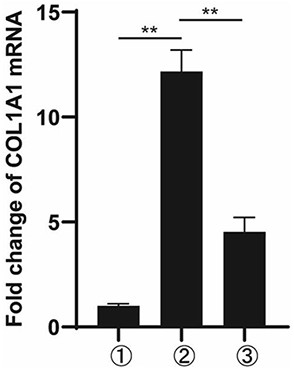Application of phthalazine derivative to treatment of hepatic fibrosis diseases
A technology of liver fibrosis and derivatives, which is applied in the field of phthalazine derivatives in the treatment of liver fibrosis, can solve the problems of unsatisfactory results in the targeted treatment of fibrosis, and achieve the effect of improving liver fibrosis
- Summary
- Abstract
- Description
- Claims
- Application Information
AI Technical Summary
Problems solved by technology
Method used
Image
Examples
Embodiment 1
[0040] The synthetic method of T-5-9:
[0041]
[0042]
[0043]
[0044] Among them: Boc is tert-butoxycarbonyl, PyBOP is 1H-benzotriazol-1-yloxytripyrrolidinyl hexafluorophosphate; DIEA is N,N -Diisopropylethylamine; (Cl 3 CO) 2 CO is triphosgene.
[0045] tert-butyl 4-((4-((2-fluorophenyl)carbamoyl)phenyl)carbamoyl)piperazine-1-carboxylate (2)
[0046] 4-amino- N -(2-Fluorophenyl)benzamide (1) (4.75 g, 20.64 mmol) was dissolved in 30 mL of anhydrous dichloromethane, and at room temperature, DIEA (7.19 mL, 41.28 mmol) and triphosgene (2.04 g, 6.88 mmol) in dichloromethane (20 mL), cooled to 0°C for 3 hours, then added N -Boc-piperazine (5.77 g, 30.96mmol), stirred overnight at room temperature, TLC detected that the raw materials were completely reacted, filtered, and the filtrate was concentrated to obtain a crude product, which was separated by column chromatography (eluent: dichloromethane: methanol = 50:1 ), to obtain yellow solid 7.12g, productive rate 7...
Embodiment 2
[0055] Human semi-activated hepatic stellate cell line LX-2 cell test
[0056] The method of culturing LX-2 cells in this example: Take out the LX-2 cells from the -80 °C refrigerator, use DMEM medium containing 10% fetal bovine serum, and place them in a 10 cm 2 In a Petri dish, 37 °C, 5% CO 2 Cultivate in an incubator, change the medium, pass passage, and take the 3rd to 6th passage cells for experiments.
[0057] 1. Western Blot experiment
[0058] Human semi-activated hepatic stellate cells LX-2 (5*10 5 each well), and set up ① blank control group, ② TGF-β stimulation group, ③ T-5-9 (0.1 μM) group, ④ T-5-9 (1 μM) group, ⑤ T-5-9 (10 μM) group. When the cell density in the well was 70%, the cells were treated as shown in Table 1, and the lysed protein was quantitatively collected after 24 h, and the expression of Collagen I protein in LX-2 was detected by Western blot method, and the results were analyzed by comparing TGF-β The expression of Collagen I in the stimulatio...
Embodiment 3
[0078] Anti-hepatic fibrosis animal test
[0079] Modeling method of mouse liver fibrosis disease model in this example: 24 male mice (6 weeks old, body weight 18-22 grams) were randomly divided into 4 groups, 6 mice in each group. By injecting 10% carbon tetrachloride (CCl 4 , 0.5 ml / 100 g body weight) for 8 weeks (three times a week) to induce liver fibrosis in wild-type mice. The mice in the control group were intraperitoneally injected with the same amount of olive oil instead of carbon tetrachloride; the mice in the model group were intraperitoneally injected with carbon tetrachloride; the mice in the positive drug group were intraperitoneally injected with CCl 4 , and given colchicine (0.1 mg / kg, once a day, week 5-8); mice in the treatment group were intraperitoneally injected with CCl 4 , and given T-5-9 (12.5mg / kg, once a day, the 5th to 8th week); follow-up experiments and drawings were named: ① control group, ② model group, ③ positive drug group, ④ T-5 -9 groups....
PUM
 Login to View More
Login to View More Abstract
Description
Claims
Application Information
 Login to View More
Login to View More - R&D
- Intellectual Property
- Life Sciences
- Materials
- Tech Scout
- Unparalleled Data Quality
- Higher Quality Content
- 60% Fewer Hallucinations
Browse by: Latest US Patents, China's latest patents, Technical Efficacy Thesaurus, Application Domain, Technology Topic, Popular Technical Reports.
© 2025 PatSnap. All rights reserved.Legal|Privacy policy|Modern Slavery Act Transparency Statement|Sitemap|About US| Contact US: help@patsnap.com



